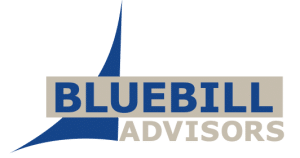Yesterday the big stimulus bill cleared the conference committee that resolves the Senate and House versions. If you remember your civics that means it will be likely to pass in the chambers and then be signed into law by the president.
Included in the bill are billions of dollars for digitizing important information such as medical records or government information. Wow! That is a lot of investment! The thinking is that inaccessible information locked in paper or proprietary formats cost us billions each year in productivity. Wow! That’s a lot of waste! Also, that access to the information could spawn a billions of dollars of new products and services, and therefore income and tax revenue. Wow! That’s a lot of growth!
Many agencies and offices have striven to expose useful official information and reports at the federal and state level. Even so, there is a lot of data still locked away, or incomplete or in difficult to use forms. A while ago a Senate official once told me that they do not maintain a single, complete, accurate, official copy of the US Statutes internally. Even if this is no longer true, the public often relies on the “trusted” versions that are available only through paid online services. Many other data types, like many medical records, only exist in paper.
There are a lot of challenges, such as security and privacy issues, even intellectual property rights issues. But there are a lot of opportunities too. There are thousands of data sources that could be tapped into that are currently locked in paper or proprietary formats.
I don’t think the benefits will come at the expense of commercial services already selling this publicly owned information as some may fear. These online sites provide a service, often emphasizing timeliness or value adds like integrating useful data from different sources, in exchange for their fees. I think a combination of free government open data resources and delivery tools, plus innovative commercial products will emerge. Maybe some easily obtained data may become commoditized, but new ways of accessing and integrating information will emerge. The big information services probably have more to fear from startups than from free government applications and data.
As it happens, I saw a demo yesterday of a tool that took all the activity of a state legislature and unified it under one portal. This allows people to track a bill and all related activity in a single place. For free! The bill working its way through both chambers is connected to related hearing agendas and minutes, which are connected to schedules, with status and other information captured in a concise dashboard-like screen format (there are other services you can pay for which fund the site). Each information component came from a different office and was originally in it’s own specialized format. What we were really looking at was a custom data integration application done with AJAX technology integrating heterogeneous data in a unified view. Very powerful, and yet scalable. The key to its success was strong integration of data, the connections that were used to tie the information together. The vendor collected and filtered the data, converted to a common format, added the linkage and relationship information to provide an integrated view into data. All source data is stored separately and maintained by different offices. Five years ago it would have been a lot more difficult to create the service. Technology has advanced, and the data are increasingly available in manageable forms.
The government produces a lot of information that affect us daily that we, as taxpayers and citizens, actually own, but have limited or no access to. These include statutes and regulations, court cases, census data, scientific data and research, agricultural reports, SEC filings, FDA drug information, taxpayer publications, forms, patent information, health guidelines, etc., etc., etc. The list is really long. I am not even scratching the surface! It also includes more interactive and real-time data, such as geological and water data, whether information, and the status of regulation and legislation changes (like reporting on the progress of the stimulus bill as it worked it way through both chambers). All of these can be made more current, expanded for more coverage, integrated with related materials, validated for accuracy. There are also new opportunities to open up the process of using forums and social media tools for collecting feedback from constituents and experts (like the demo mentioned above). Social media tools may both give people an avenue to express their ideas to their elected officials, as well as be a collection tool to gather raw data that can be analyzed for trends and statistics, which in turn becomes new government data that we can use.
IMHO, this investment in open government data is a powerful catalyst that could actually create or change many jobs or business models. If done well, it could provide significant positive returns, streamline government, open access to more information, and enable new and interesting products and applications. </>

